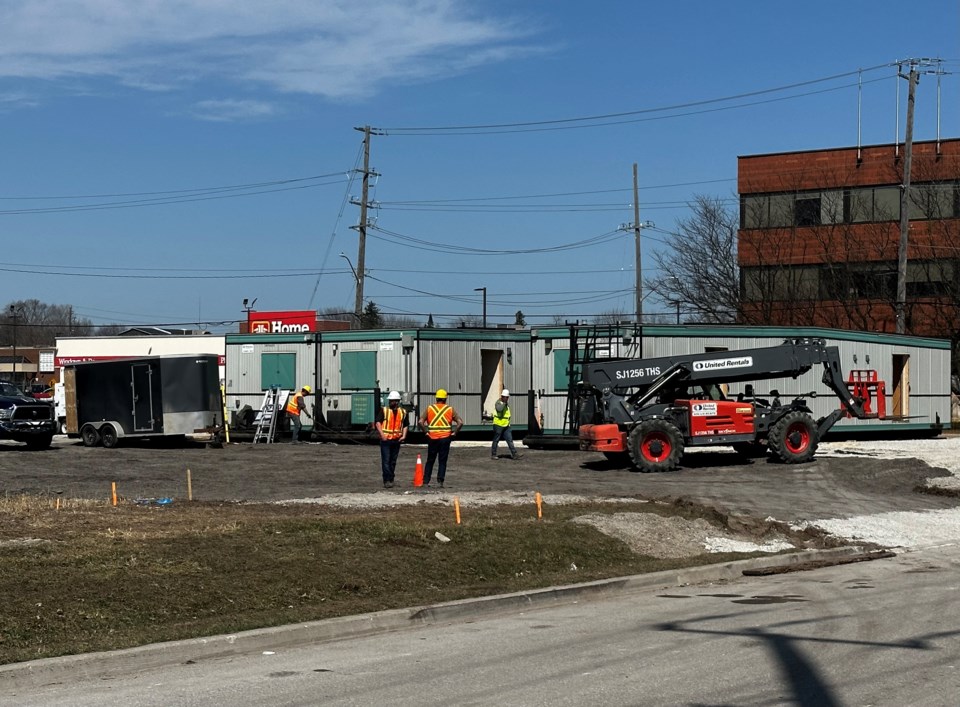Tenants will soon move into the newly finished supportive rapid rehousing project on West Street South, which will be used to assist youth between the ages of 16 and 24 transition from homelessness into permanent housing.
In April, the County of Simcoe announced the Elizabeth Fry Society of Simcoe Muskoka as its service partner for the project, an organization that has long worked to minimize and reduce homelessness in the area.
With a new housing facility featuring private bedrooms, a recreation room, and community kitchen, the organization is currently working to source youth tenants from the county’s coordinated access system.
“We're doing intakes right now as we speak, and we're hoping to help youth in the space as soon as possible,” said Meaghan Chambers, executive director with Elizabeth Fry.
“Youth that are coming into the program are youth who are experiencing homelessness in the County of Simcoe, and they're prioritized through the coordinated access system.”

With space for up to 14 tenants at a time, the facility will provide housing and a wide range of supports during stays of up to six months, to help them transition from homelessness to permanent housing.
“We're hoping to work with community organizations in the Orillia area, like the Gilbert Centre, the (Orillia) Youth Centre, and we will have 24-hour on-site support staff available,” Chambers said.
“We also have an intensive case manager who will be doing housing-focused casework with the individuals who are living here, and we also have a trustee worker who works with youth aged 16 and 17 who are looking to get access to Ontario Works benefits.”
The project’s intensive case manager and program facilitator will help youth access resources in the community over the course of their stays, Chambers said, adding that one of the goals of the facility is to help lessen the likelihood of further episodes of homelessness by proving the support that youth need.
“We want to really focus on providing well-rounded supports to young people to be able to really secure housing at a young age, so they're not having long periods of homelessness that's causing additional trauma, but also to be able to help reduce some of the risk of recidivism rates of homelessness further down the road,” she said.
Orillia Coun. Jay Fallis recently took a tour of the completed facility, and said it’s “amazing (that), in under a month, they were able to build these units.”
“Outside it looks like standard portables, but inside it looks like a pretty presentable, transitional housing setup,” he said. “It's a good size; it'll be an adequate space for everyone, so we're really excited to see this project not just come to fruition, but come to fruition and look really great on the inside.”
Fallis said youth transitional housing has been a topic of discussion since he was first elected to council in 2018, and he said he’s proud to see the project come to fruition.
However, he conceded there is still a lot of need in the community.
“We could build, I bet, 10 more of these things and fill them pretty easily, not necessarily just with youth but with all different demographics because of how desperate the situation is with affordable housing,” he said. “(There’s) pride, but it's bittersweet, knowing that there's a lot more work to be done on this front.”
Discussions around the city council table over the past several months did not explicitly state the project would be used as a youth transitional housing space, but rather that it would be used to help those experiencing “situational homelessness.”
County officials told OrilliaMatters that using the facility for youth was discussed with council as an option during initial siting presentations.
“It is important to note that this program will serve as a supportive rapid re-housing program for youth ages 16 to 24,” said Mina Fayez-Bahgat, general manager of social and community services.
“This is a very critical age group where support and assistance can see long-term positive outcomes for the individuals participating in the program, and help to alleviate other long-term pressures on our shelter, social and health systems.”
The project aims to support 20 to 40 individuals in its first year, and up to 200 people through its five-year duration.
